New Samsung TV 2021: every QLED and Micro LED screen this year
These new Samsung TVs are better than ever
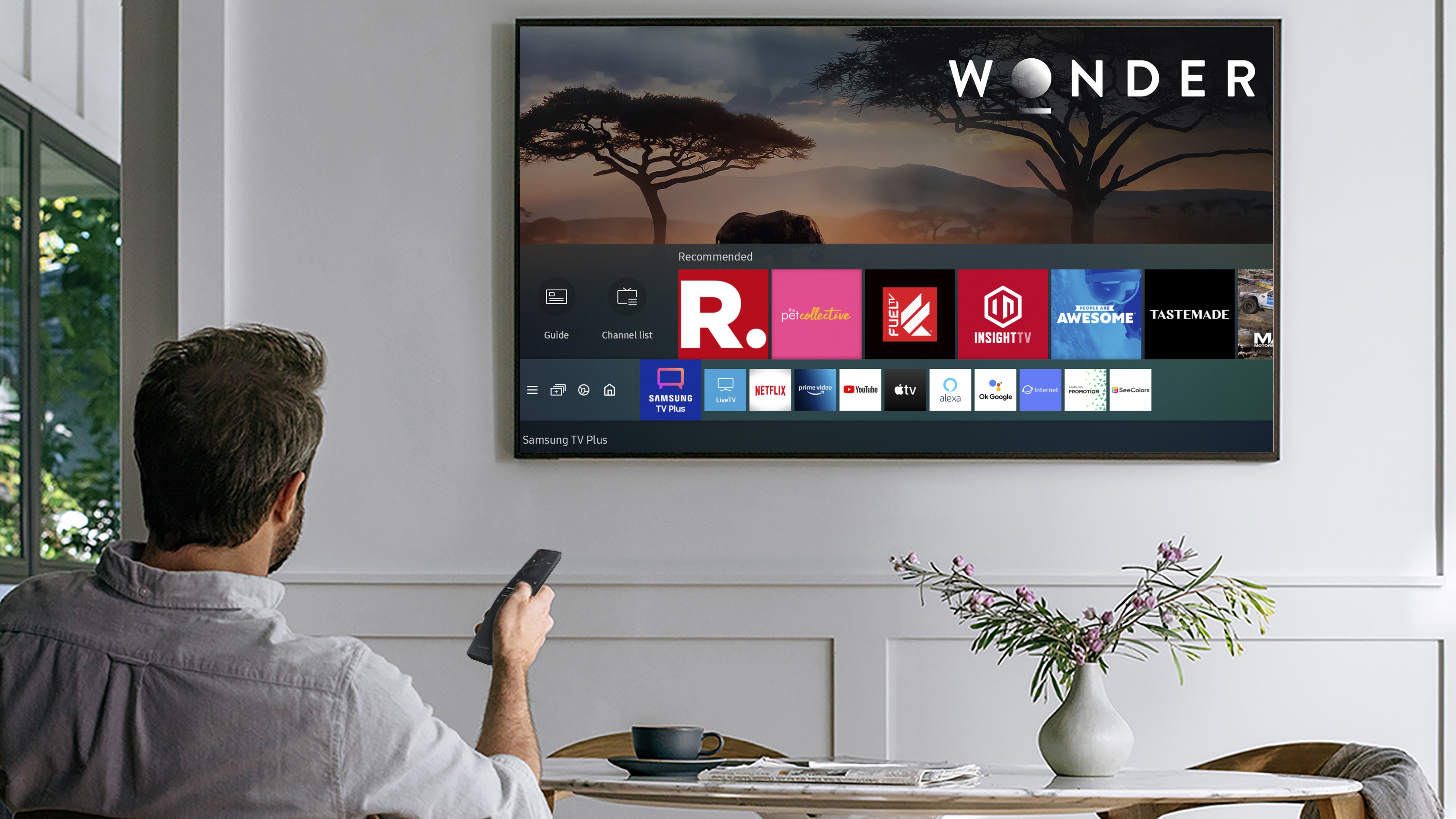
The end of 2021 is nearly upon us and we've been treated to a wide range of Samsung TVs this year – from its premium 4K and 8K QLEDs to its more budget-friendly smaller QLEDs.
We’ve also received refreshes of its Samsung The Frame TV that looks like a painting (now significantly slimmer) and its outdoor TVs with Samsung The Terrace. If you’re on a budget, there’s a new Samsung TV for you too with the 32-inch Q50A QLED screen. It might only have an FHD picture (1920 x 1080 pixels) but it’s packed with HDR10+ and Samsung’s QLED tech to keep you happy.
There's not much time left this year, but there's still a chance we could see a sneak launch before 2022 arrives.
Either way, 2022 should mean we finally see Samsung’s quantum OLED panels, rumored to be launching next year. Multiple industry insiders have confirmed that they’re set to release in 2022, boasting all the benefits of OLED panels (deep blacks, infinite contrast, flexible panels) and Samsung’s quantum dot filters (used to enhance color and contrast).
While we can’t say for certain, it could mean that Samsung’s 2022 displays will be a significant step up from what’s come before - along with a significant price increase too most likely. If you’re in the market for a new TV, it might be worth waiting a while longer to see what quantum OLED panels could add to your home cinema experience.
Just don’t expect any of its TVs to launch with Dolby Vision support on Samsung TVs; it looks like the brand is sticking to its own HDR10+ format for now.
- Check out the best 65-inch TVs and best 75-inch TVs
Generally, Samsung’s 2021 prices have been fairly reasonable too. Sure you’ll be paying a fair amount for the QN900 and QN800 8K QLEDs that are now shipping in the US, but their price tags match last year's sets, and so far nothing this year will be as astronomical in price as 2020's 85-inch Q950TS.
We still don’t have any public info on the pricing of Samsung’s latest Micro LED display, The Wall, despite it being for sale. The version that was released in 2020 sold for an exceptionally steep price of $156,000 (around £113,000 or AU$210,000) so expect something similar if your business is trying to budget for one of these screens.
For now, you can read more information on the new sets released in 2021, including pricing details for the 4K and 8K ranges below. We'll update this page as we find out more about the pricing and release information for the rest of the sets in Samsung’s range too.
New Samsung TVs for 2021
Samsung's Budget TVs
Why you can trust TechRadar
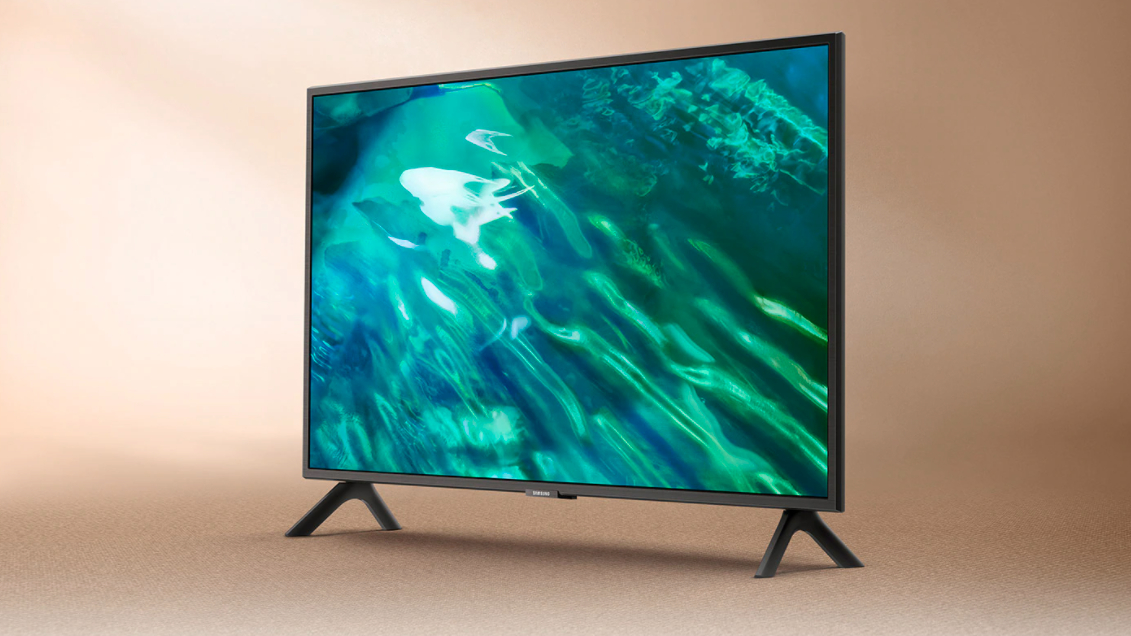
The rest of this list highlights the latest and greatest TVs Samsung has released in 2021, though with some options costing several $1000s we know they won't suit every budget. While we haven't been able to review this offering, it is new in 2021 and could be just what your home cinema needs without having to break the bank.
Samsung Q50A QLED HD TV 2021 (32-inch): If you're in the UK and want to experience Samsung's splendid HDR10+ format (powered by its bright QLED technology) this is an exceptionally affordable option priced at just £499.
There are some downsides though, a big one being that you can only achieve an FHD image (1080p) rather than 4K. On a smaller 32-inch display like this that might not be the most noticeable issue, but it is one to be aware of.
We would argue that you might be better off with Samsung's The Frame at this price, but if you're after a plain and simple TV without any gimmicks, take a look at the Q50A on Samsung's website.
Samsung Neo QLED 8K TVs
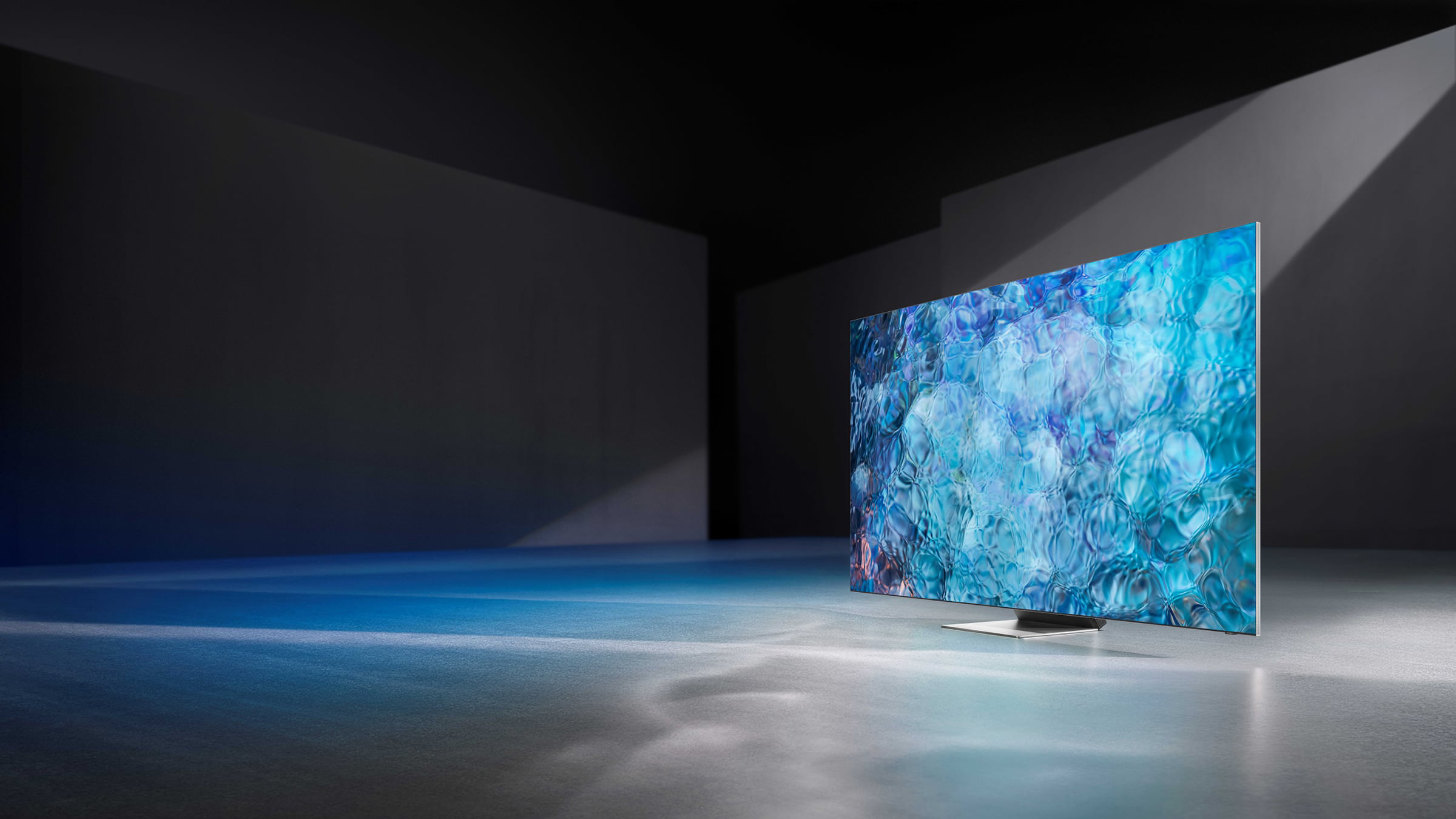
Samsung QN900A Neo 8K QLED TV (65, 75, 85-inch): The Samsung QN900A is the top-of-the-line Samsung 8K display in 2021. It features the Infinity Display that offers an edge-to-edge image with no bezel and a metal chassis. It uses Samsung’s OTS Pro sound for built-in 6.2.2-channel surround sound, and of course the 8K Quantum Processor. It starts at $4,999 for a 65-inch model (around £3,600 / $AU6,500), which is exactly what last year's Q900TS started at when it launched – and it started shipping to US shoppers in March 13.
Read our full Samsung QN900 8K QLED TV review
Samsung QN800A Neo 8K QLED TV (65, 75, 85-inch): The QN800A has incredibly thin bezels, though Samsung's matrixing technology that reduces the gap between where the pixels end and bezel begins is exclusive to the company's top-of-the-line Samsung Neo QN900A TV QLED 8K TV. Still, the QN800A does have ultra-wide viewing angle support that you don’t get on the QN700A, and that’s relatively crucial if you’re thinking about going any larger than 65-inches.
It's starting at $3,499 (around £2,500 / AU$4,500) for its smallest size, a small increase over the $3,199 starting price of last year's Q800TS.
Read our hands on Samsung QN800 8K QLED TV review
Samsung QN700A Neo 8K QLED TV (55, 65, 75-inch): The Samsung QN700A Series will return in 2021 with a new version of the Q700T that made its debut last year. It’s still the entry-level 8K model this year, but it will see the benefit of the Mini LED backlights and the 8K Quantum Processor. You’ll still get the ultra-widescreen game mode, and VRR support, but it is missing a few step-up features that you’ll find in the QN800A.
Read more: Is Samsung's cheapest 8K QLED TV worth buying?
Samsung Neo QLED 4K TVs
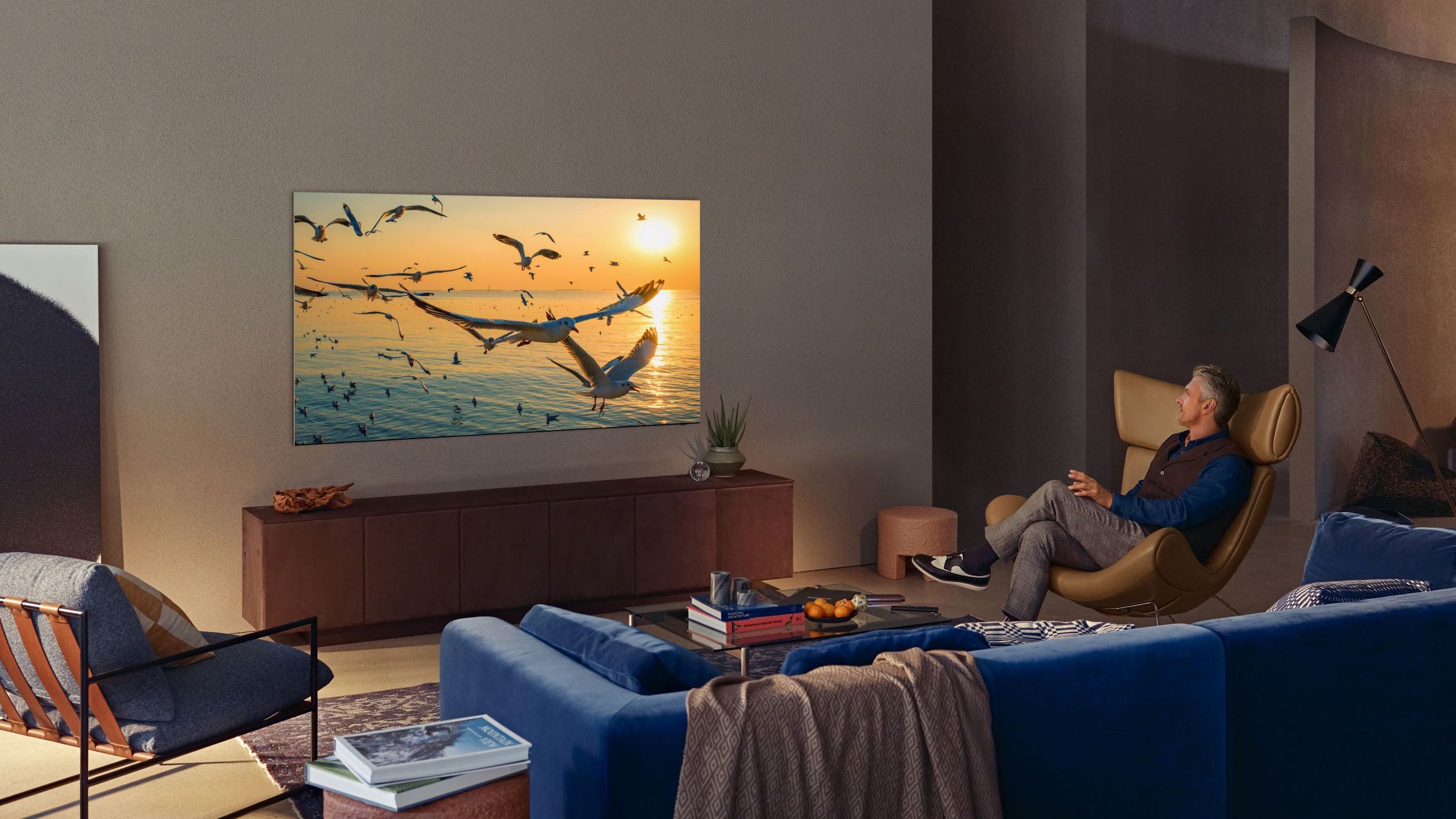
Samsung QN90A / QN95A Neo QLED TV (55, 65, 75, 85-inch): Turning to 4K TVs, the head honcho is the new Samsung QN90A Neo QLED. The variation of Mini LED technology that it uses means that this year’s model will suffer from even less blooming than in prior years, and it should reach a slightly higher peak brightness level thanks to the greater density of LEDs. On top of that, the new Quantum Processor redirects power to where it’s needed on the screen for brighter HDR highlights and better local dimming, plus Samsung says that there’s also black level data boost to bring out more details in dark areas. An ultra-bright QLED that handles black levels like an OLED? We can’t wait to see it in person.
It'll start at $1,799 (around £1,300 / AU$2,300) for a 55-inch model, and go up to $4,999 (around £3,500 / AU$6,300) for an 85-inch model. There is a QN95A iteration in the UK that adds the new Slim One Connect box, but likely won't be available in the US.
Read all about it in our Samsung QN95A Neo QLED TV review
Samsung QN85A Neo QLED TV (55, 65, 75, 85-inch): This step-down model is still a Neo QLED 8K TV with a Mini LED backlight – but differentiates from the QN80A QLED below in featuring the Slim One Connect box being introduced in this year's new Samsung TV range, as well as packing a Neo QLED processor. It'll start at $1,599 (around £1,100 / AU$2,000) for a 55-inch size, and go up to $4,499 (around $3,200 / AU$5,700) for an 85-inch size.
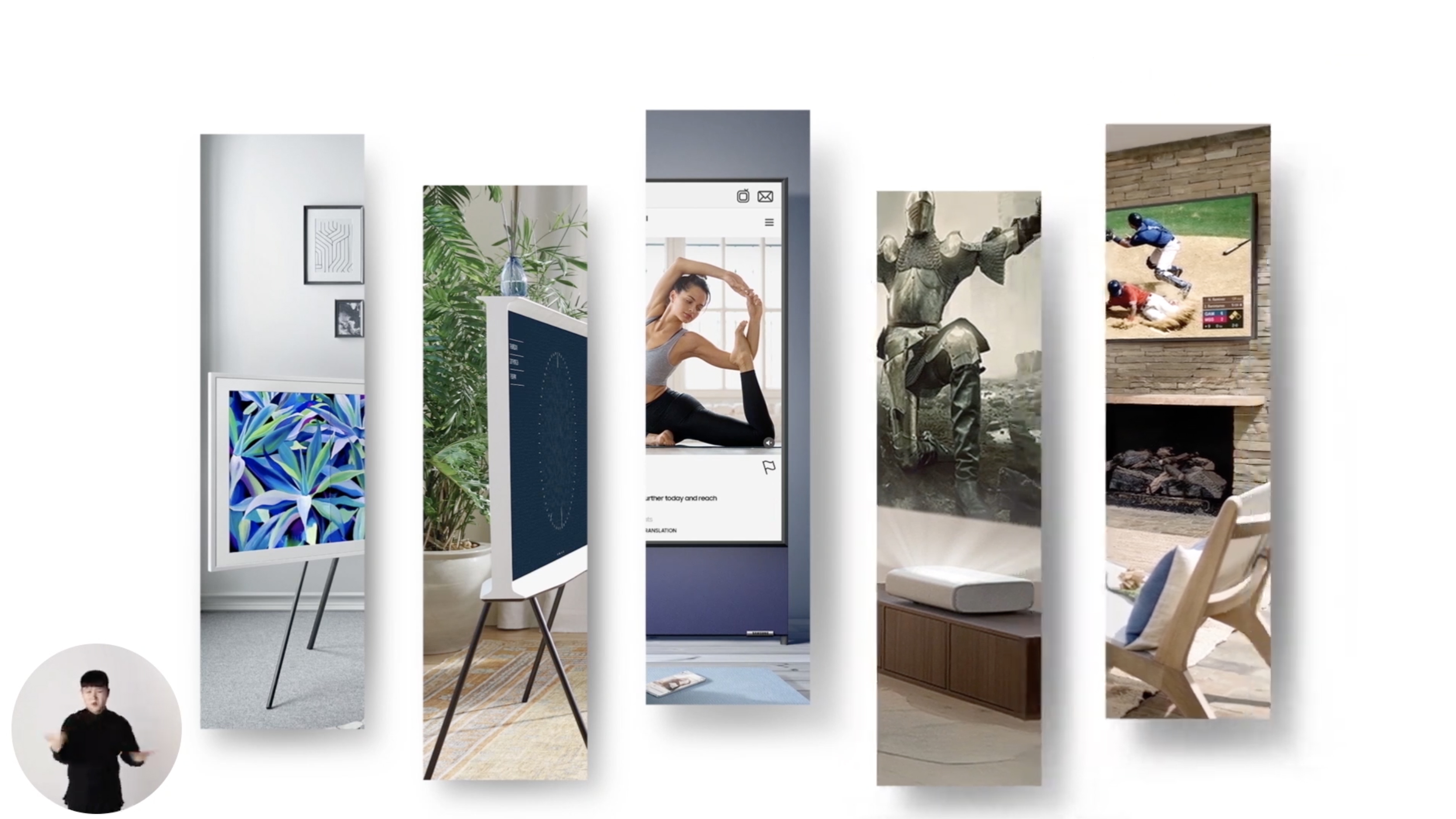
Samsung Q80A QLED TV (55, 65, 75, 85-inch): If the QN90A is a bit too far out of reach, Samsung will be making a successor to the moderately affordable Samsung Q80T that we saw in 2020 with the Samsung Q80A. It's a bit cheaper than the Neo QLED above at $1,299 (around £900 / AU$1,650) for a 55-inch size, thanks to a lower-spec processor and the lack of any One Connect box – but you get a booming 60W audio output.
Samsung Q70A QLED TV (55, 65, 75, 85-inch): The Q70A QLED offers a 120Hz panel and 4K resolution, and comes with Samsung's existing Quantum 4K processor. You are seeing a big drop in audio, though, with only 20W output, and two-channel audio rather than 2.2. It starts at $949 (around £700 / AU$1,200) for a 55-inch size and tops out at $2,999 (around £2,100 / AU$3,800) for an 85-inch size.
Samsung Q60A Neo QLED TV (55, 65, 75, 85-inch): As the cheapest QLED in this year's range, and the successor to last year's Q60T, the Q60A is sure to get attention from savvy buyers – especially because of how many sizing options are available, with everything from a 43-inch ($549, or around £400 / AU$700) to an 85-inch ($2,599, around £1,850 / AU$3,300) size. It makes use of a Quantum Processor Lite, 20W audio, and a pared-down OTS Lite audio technology.
Read more: Samsung Q60A price, release date and specs
Crystal UHD TV models
Samsung AU9000 (screen sizes TBD): Samsung’s Crystal UHD TV lineup will return in 2021 with two new models, the AU9000 and AU8000. Both models will feature a slimmer chassis than last year’s models from around 59mm to 25mm in depth, and a dynamic refresh technology to make a native 60Hz refresh rate seem like a 120Hz panel thanks to Motion XCelerator Turbo. You’ll also get AMD FreeSync on 60Hz TVs.
Samsung AU8000 (screen sizes TBD): The Samsung AU8000 Series is the cheapest Samsung TV we know about in 2021. It’s definitely going to be a native 60Hz TV with 4K support and it will probably use a basic quad-core processor. That said, if you’re after the cheapest new Samsung TV, the AU8000 will be the one to keep an eye out for.
Lifestyle TVs: The Wall, The Frame, The Terrace
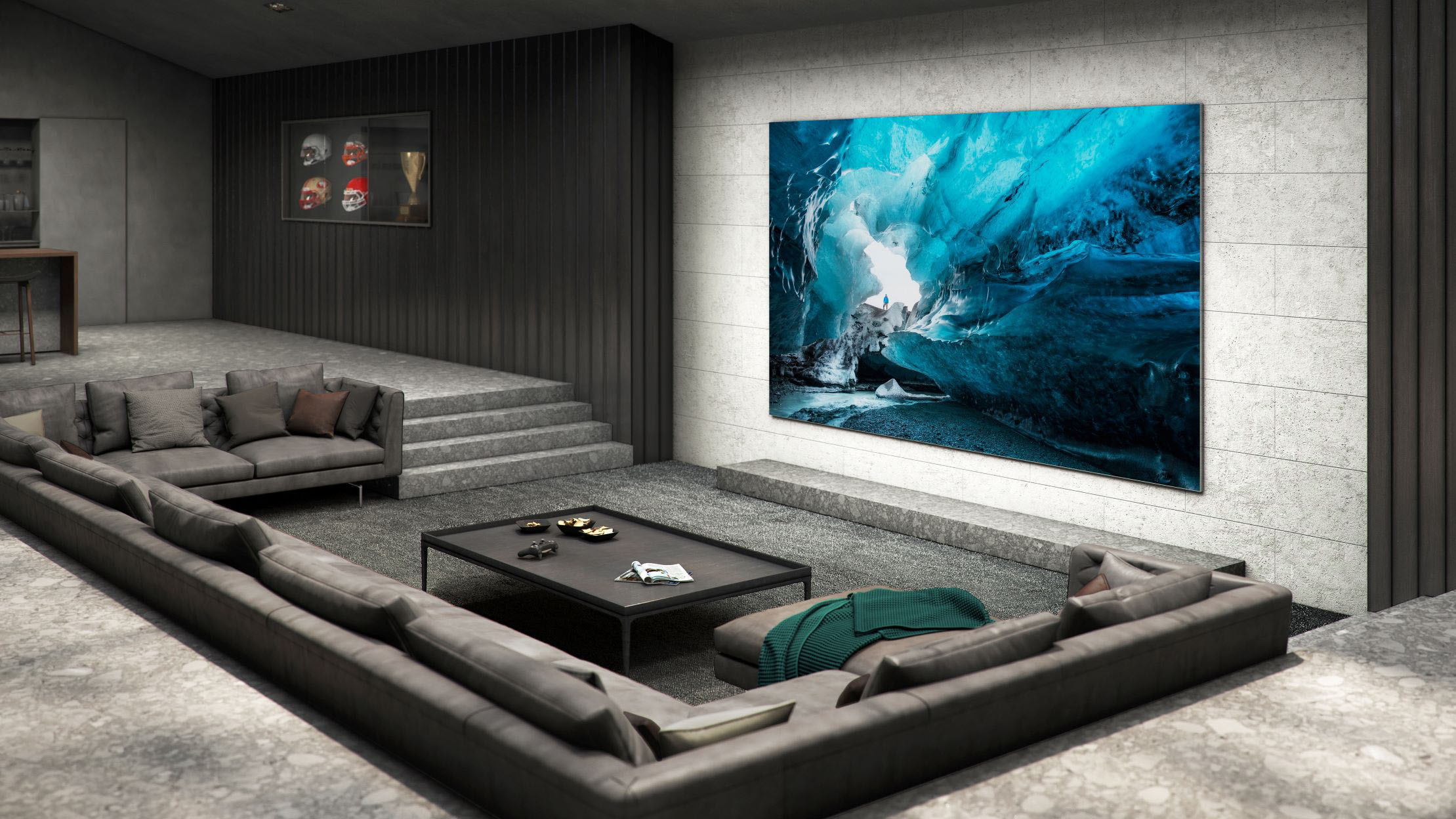
Samsung The Wall 2021 (88-inch, 99-inch, 110-inch): Samsung says that this is the year its MicroLED TV tech “comes home”. We’ve seen various iterations of The Wall over the years, all of them carrying huge price tags and at sizes almost no-one can fit in their home – but that looks set to change this year. The cost is unconfirmed, but at a smallest 88-inch size, it’s certainly more realistic a proposition than ever before. The set will even be able to split its picture into four distinct screens for multi-channel viewing, and we’re excited to see exactly what this feature can do.
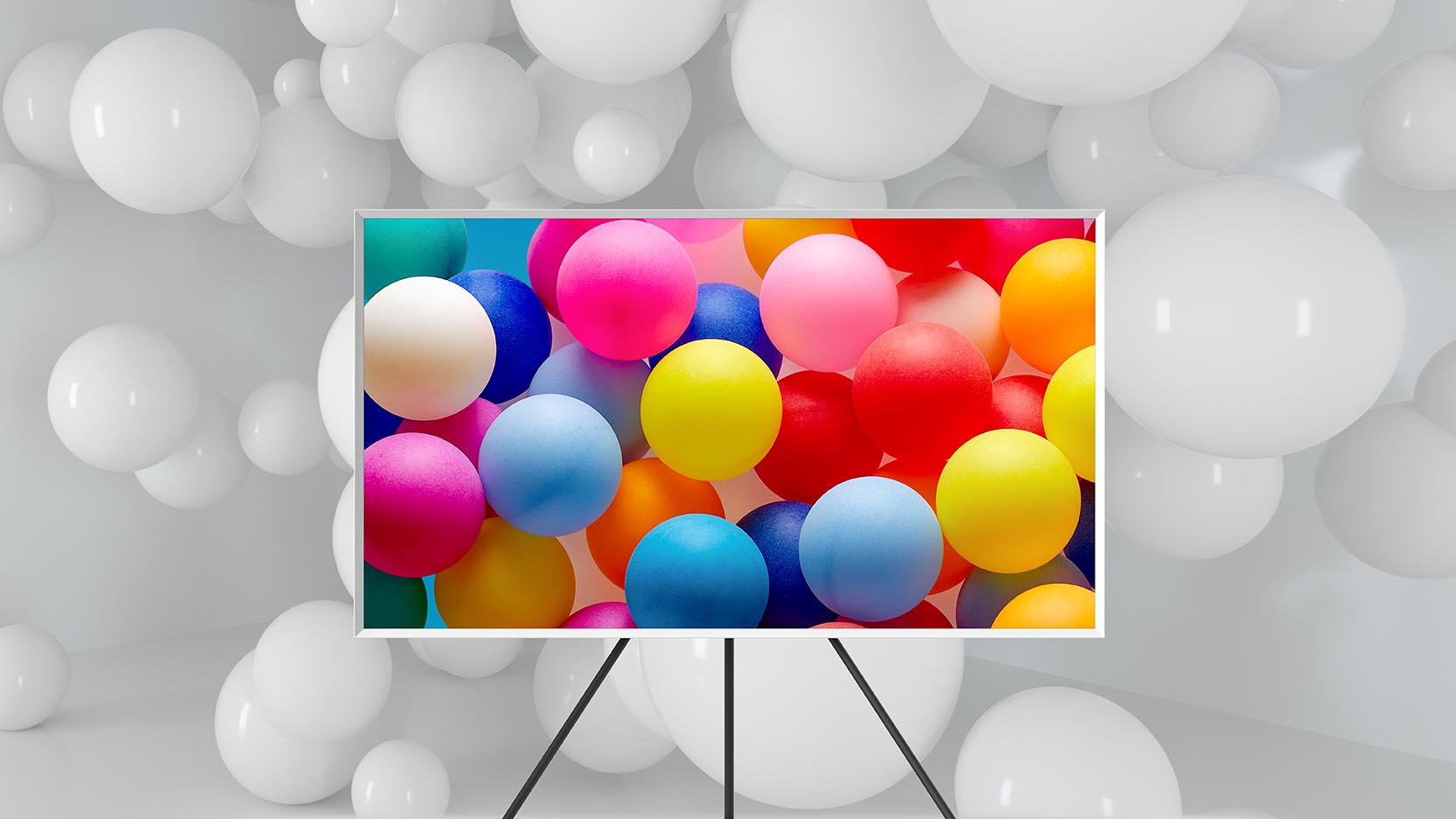
Samsung The Frame 2021 (43, 50, 55, 65, 75-inch): There’s a new iteration of Samsung’s fashion-forward Frame TV, which apes the style of a picture frame and offers up to 14,000 artworks in a dedicated Art Store (for paid subscribers) to make sure your TV’s looking good even when you’re not watching Netflix.
This year’s model is a lot slimmer, at just 24.9mm thick, with a host of new customization / bezel options and a tripod TV stand option. The 43-inch model is said to work in a portrait orientation too, but we’re not expecting the mechanical rotations of the Samsung Sero here.
The pricing is pretty much the same as last year's model. You're paying an identical $999 for a 43-inch size for both the 2020 and 2021 iterations, while the $1,299 50-inch model, $1,499 55-inch model, and $1,999 65-inch model are only an additional $100 over their predecessors. The largest 75-inch size, too, is $2,999, a small step up from the $2,799 price tag of the 2020 model.
There's no 32-inch size confirmed just yet, though you do have the option of the 2020 iteration for a more compact size.
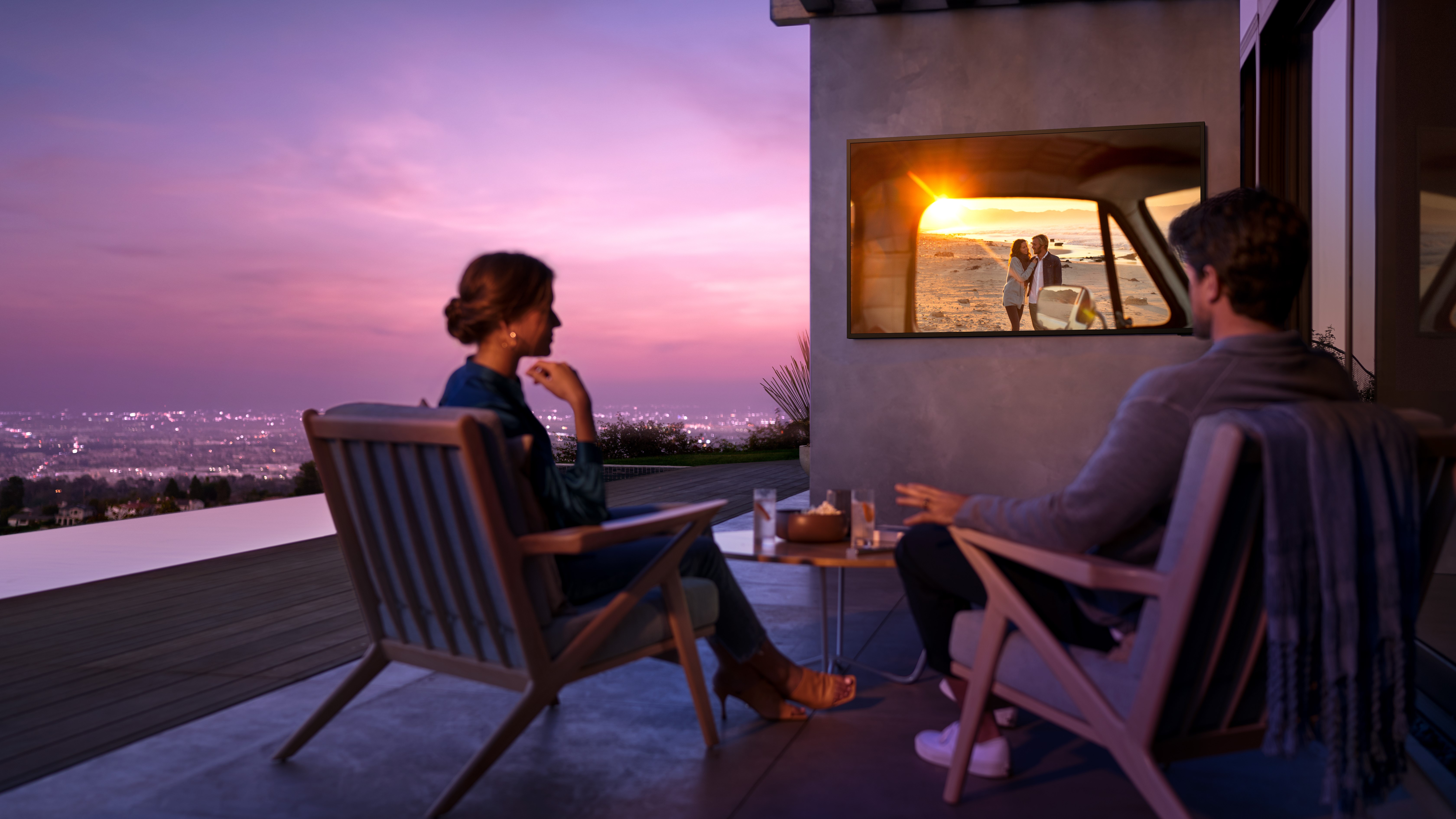
Samsung The Terrace 2021 (55-inch, 65-inch, and 75-inch): Samsung The Terrace is the first outdoor TV to come from the world’s biggest TV maker, and it isn’t just a tick-box weatherproof screen that won’t get wrecked if you’re watching a film in the rain. The Terrace is Samsung acknowledging that people like to use their devices outside of traditional living room arrangements.
The outdoor TV experience won't come cheap though, as it starts off at $3,499 / £3,999 / AU$5,199 for the 55-inch size, and stretches up to $6,499 / £6,499 / AU$9,499 for the 75-inch model. AT this price you'd expect a lot and we're not entirely convinced it's worth the cost of admission.
We don't feel we've spent enough time with it to give The Terrace a TechRadar full review, but our hands-on impressions so far have been mixed. The QLED display (with its 2,000 nits of brightness and anti-glare layer) offers decent viewing even in the midday morning sun. However, the audio of the standard speaker is quite disappointing, especially at this price.
New Samsung TV tech
What's new in Samsung TVs this year?
While most years offer a boost in contrast here and a new upscaling algorithm there, Samsung’s 2021 Neo QLED lineup is actually the biggest step forward for the South Korean electronics maker in the last five years. What Neo QLED promises is smaller LED backlights – similar but not quite identical to – the MiniLED technology Samsung uses in The Wall.
Because the LEDs are clustered closer together, Neo QLED TVs promise radically increased brightness, reduced blooming and wider viewing angles. In tandem with a built-in light sensor and upgraded Quantum Processor, a Neo QLED TV can redirect power at the drop of a hat, boosting bright HDR highlights in one part of the screen, while dropping other parts to near-black.
Although the resulting image will never quite have the same contrast OLED TVs have (with their self-emissive pixels), Neo QLED TVs will hit 100% color volume for DCI-P3, and have a higher peak brightness overall – so expect them to be super bright and colorful.
On the software side of things, Samsung is upgrading Tizen to better meld with our new work-from-home lifestyles. For starters, it’s adding remote access will allow you to browse your office PC from your home Samsung TV, and when it’s time to relax with family and friends, you’ll be able to do Google Duo calling straight on your smart TV by attaching an HD webcam.

What gamers will appreciate is that all the new Neo QLED TVs shown so far support 4K/120 gameplay with VRR (AMD FreeSync Premium Pro and Nvidia G-Sync) as well as ALLM. Samsung says the TVs average 9.8ms input lag and HGiG if you connect your PC. Two final neat features for gamers are the 32:9 aspect ratio mode which, on a 65-inch TV, is about 59-inches across and wider than the largest ultra widescreen gaming monitor, plus a new Game Bar that displays real-time FPS and input lag.
We have yet to hear much in the way of new chassis design, but Samsung is touting a few of the improvements it’s made to Object-Tracking Sound technology that adds two additional tweeters for enhanced dialogue and an active voice amplifier that measures ambient noise in the environment and raises the mids to audible levels. These are small features and will only be available in the highest-end models, but they’re worth noting all the same.
In terms of aesthetics, there’s a new 2021 model of the OneConnect box, called the Slim One Connect Box. This outsources all of your HDMI, power inputs and the like into a piece of hardware separate from the TV, preventing a mess of cables hanging down from your new display. This newest model is a slimmer, more compact version of the One Connect Box we’ve seen over the past few years, with updated connections and a new form factor – along with the ability to attach it to the back of a TV stand.
Looking further ahead, rumors suggest that Samsung OLED TVs could be on the way. A new report from Korea IT News (via CNET) is saying that the world's largest TV maker could make the move to OLED – or at least a kind of OLED – as soon as next year.
New Samsung TVs for 2020
New Samsung TVs for 2020

Samsung Q950TS 8K AI QLED (available in 65, 75, 85 inches)
US model numbers: QN85Q950TSFXZA
UK model numbers: QE65Q950TSTXXU, QE75Q950TSTXXU, QE85Q950TSTXXU
The flagship 8K QLED for 2020 is a real beauty. The Q950TS has a near-invisible bezel for an expansive 99% screen design, and top-of-the-range AI processing, as well as an innovative OTS+ surround sound speaker system built into the frame of the television. HDR10+ is a given too. If you want an 8K TV this year, and cash is no issue, this is likely the set you want. (You'll already find it in our best Samsung TV 2020 guide.)
The Q950TS has launched in the US and UK, with a 82-inch model retailing at $13,000 (around AU$21,400). You can now order the 65-inch, 75-inch, or 85-inch models in the UK for £5,999, £7,999 and £11,999 respectively too.
Find out more in our Samsung Q950TS 8K QLED review.
Samsung Q900TS QLED TV (available in 65, 75, 86-inch)
US model numbers: QN65Q900TSFXZA, QN75Q900TSFXZA
UK model numbers: QE65Q900TSUXXU, QE75Q900TSUXXU
The next step down from the Q950TS flagship, this set features the same multi-dimensional OTS+ audio and high-end 8K HDR picture – though without the same all-screen design or One Connect box. Starting at $5,499 (around £4,400 / AU$8,700) for the 65-inch model.
Find out more in our Samsung Q900TS QLED TV review.
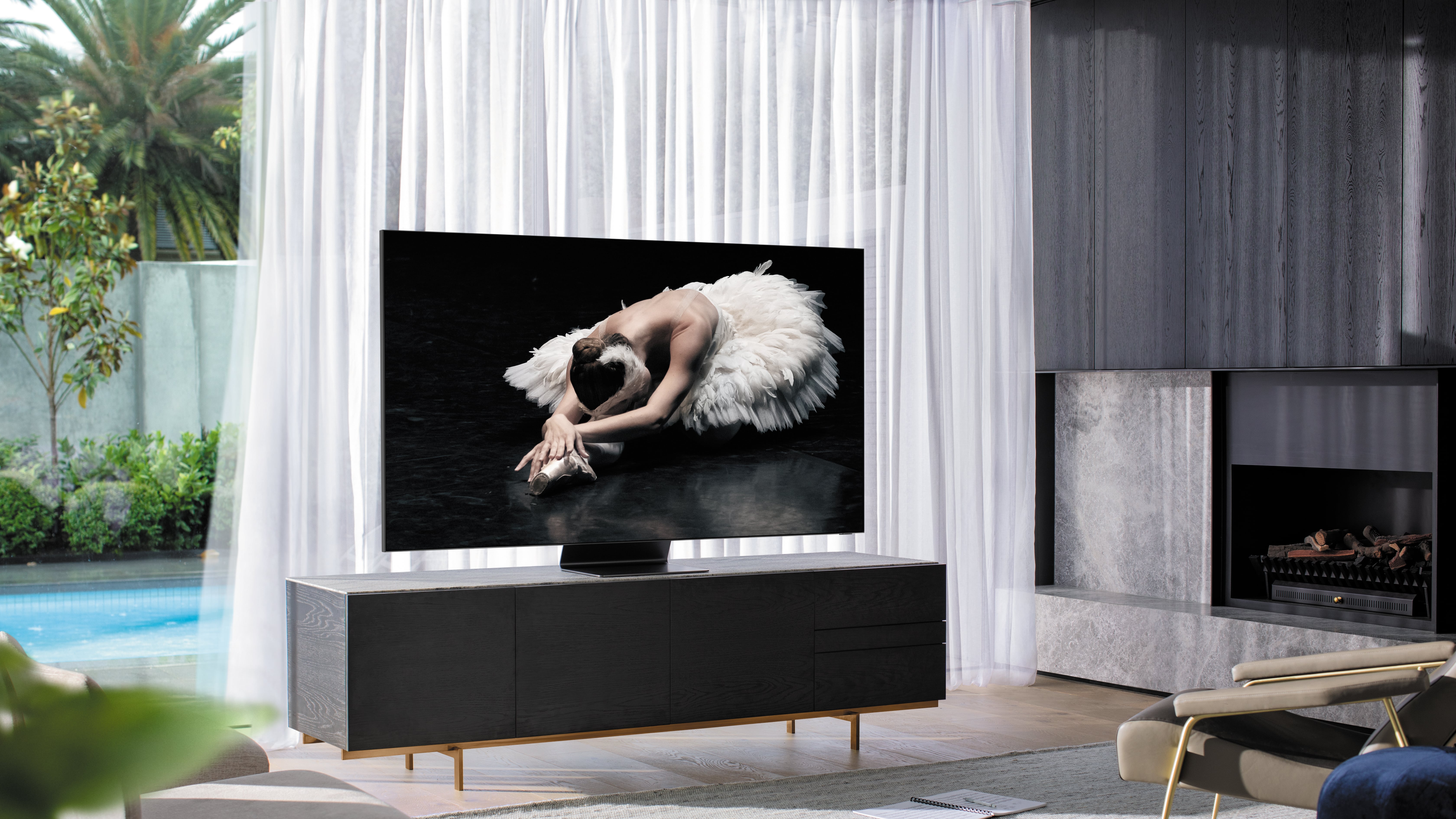
Samsung Q800TS QLED TV (available in 65, 75, 82-inch)
US model numbers: QN65Q800TAFXZA, QN75Q800TAFXZA, QN82Q800TAFXZA
UK model numbers: QE65Q800TAUXXU, QE75Q800TAUXXU, QE82Q800TAUXXU
This year's cheapest 8K QLED model, also with OTS+ audio. Starts at $3,499 / £3,999 (around AU$5,300) for the 65-inch model.
Find out more in our Samsung Q800TS 8K QLED review.
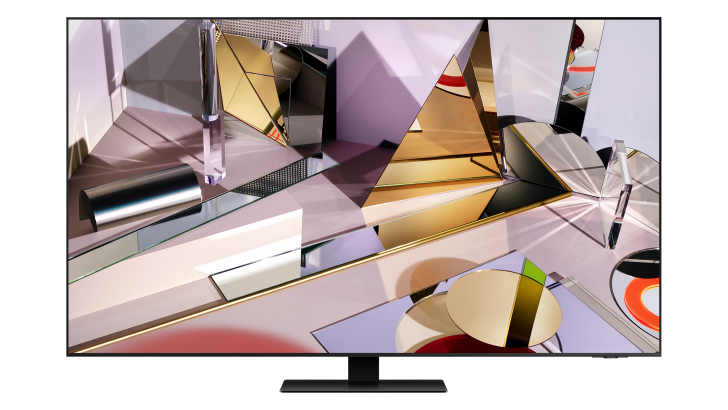
Samsung Q700T (available in 55, 65-inch)
UK model numbers: QE55Q700TATXXU, QE65Q700TATXXU
Retailing at £1,999 (around $2,700 / AU$3,600) for its smallest 55-inch size, the Q700T is by far the cheapest way to get a Samsung 8K TV for your home – with the Q800T starting at $3,199 / £3,799 / AU$4,999 for a 65-inch size. As an entry point to 8K, the Q700T wins on its more accessible price point – even if it hasn't been through our testing process as of yet. For the moment, you'll only find it in the UK and Europe.

Samsung Q90T/Q95T QLED TV (available in 55, 65, 75, 85-inch)
US model numbers: QN55Q90TAFXZA, QN65Q90TAFXZA, QN75Q90TAFXZA, QN85Q90TAFXZA
UK model numbers: QE55Q90TAUXXU, QE65Q90TAUXXU, QE75Q90TAUXXU, QE85Q90TAUXXU
As the flagship 4K QLED for 2020, the Samsung Q90T features a simplified Object Tracking Sound speaker system, as well as Ultra Viewing Angle technology to help keep colors rich and contrast high even when viewing the television display from the side. The 65-inch model retails at $2,499 / £1,999 (around AU$3,790). There's a Q95T model that comes with a One Connect box too, for a small increase in price.
Find out more in our Samsung Q95T 4K QLED review.
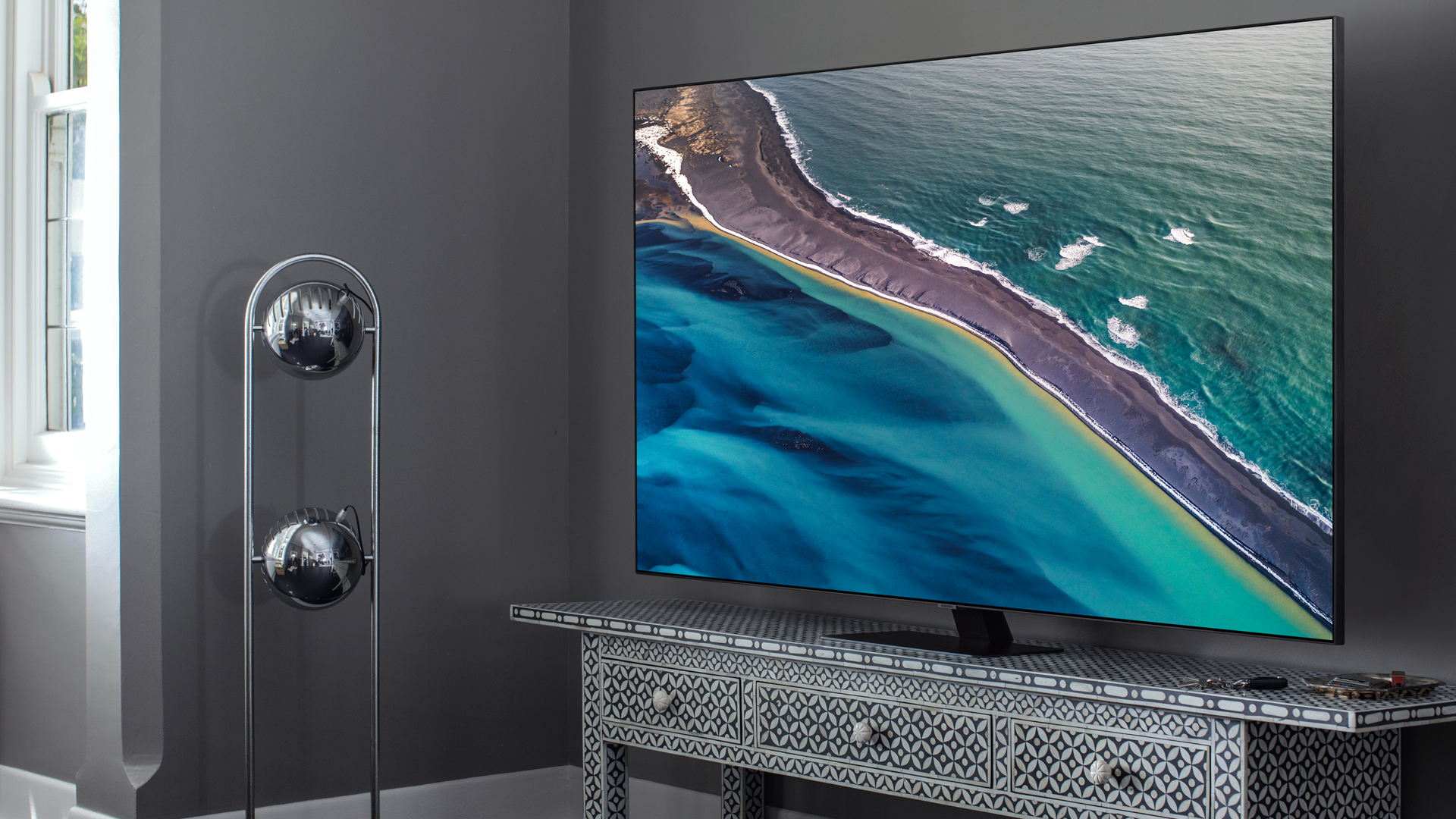
Samsung Q80T QLED TV (available in 49, 55, 65, 75, 85-inch)
US model numbers: QN49Q80TAFXZA, QN55Q80TAFXZA, QN65Q80TAFXZA, QN75Q80TAFXZA, QN85Q80TAFXZA
UK model numbers: QE49Q80TAUXXU, QE55Q80TAUXXU, QE65Q80TAUXXU, QE75Q80TAUXXU, QE85Q80TAUXXU
With a direct backlight, this 4K HDR TV is a smart step-up from the Q70T and Q60T models. You'll also get Samsung's new Object Tracking Sound speaker array for immersive sound. Starts at $1,099 / £1,399 (around AU$1,660) for the 49-inch size.
Find out more in our Samsung Q80T 4K QLED review.

Samsung Q70T/Q75T QLED TV (available in 55, 65, 75, 82, 85-inch)
US model numbers: QN55Q70TAFXZA, QN65Q70TAFXZA, QN75Q70TAFXZA, QN85Q70TAFXZA
UK model numbers: QE55Q70TAUXXU, QE65Q70TAUXXU, QE75Q70TAUXXU, QE85Q70TAUXXU
Though this is an edge-lit QLED set, its Quantum Processor 4K and the glowing review we gave 2019's Q70 all bode well for this TV. Starts at $999 / £1,299 (around AU$1,500) for the 55-inch size, with a more expensive Q75T option that comes with the OneConnect box.
Read more in our Samsung Q70T QLED TV review.
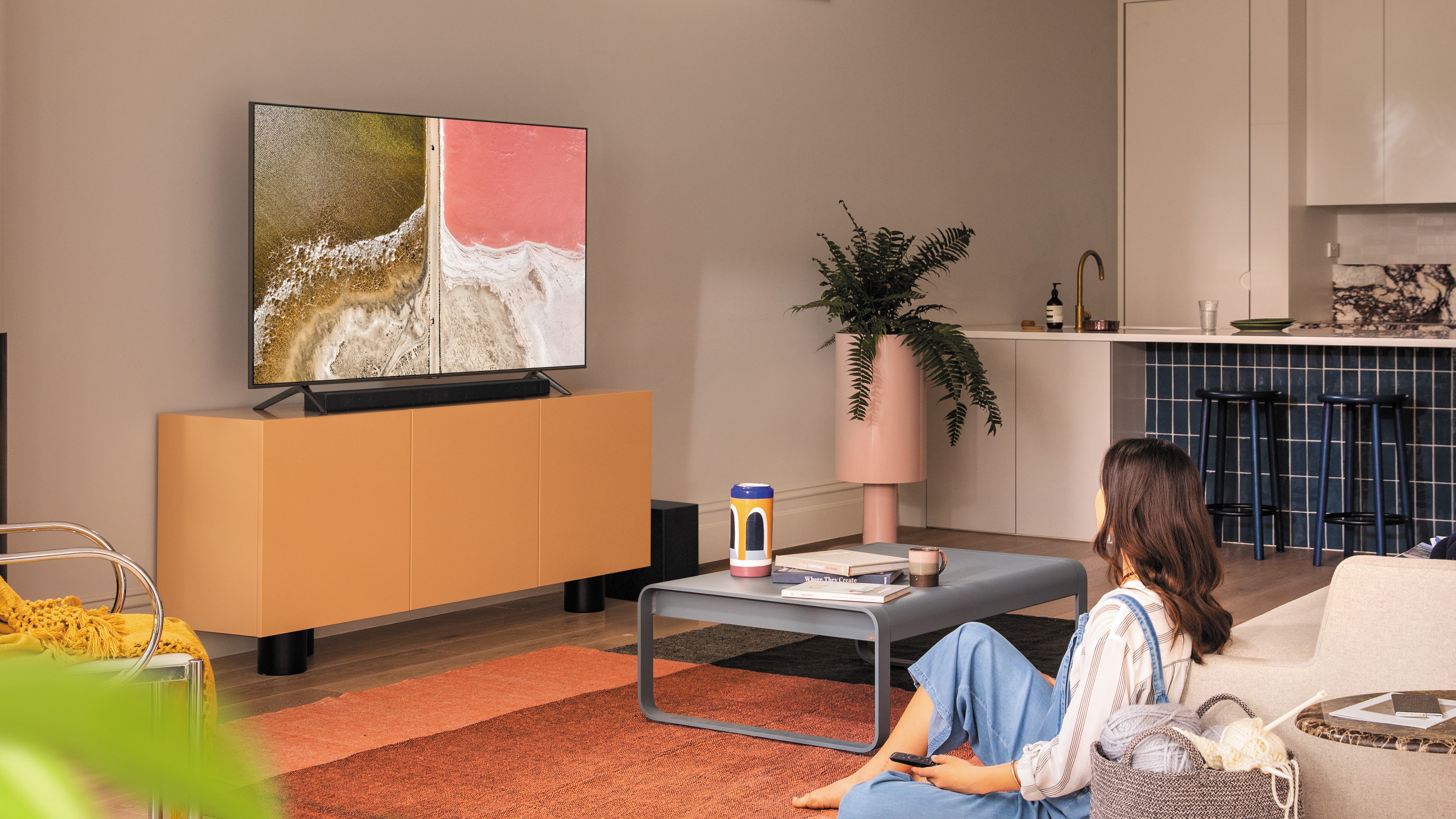
Samsung Q60T/Q65T QLED TV (available in 43, 50, 55, 58, 65, 75, 85-inch)
US model numbers: QN43Q60TAFXZA, QN50Q60TAFXZA, QN55Q60TAFXZA, QN58Q60TAFXZA, QN65Q60TAFXZA, QN75Q60TAFXZA, QN85Q60TAFXZA
UK model numbers: QE43Q60TAUXXU, QE50Q60TAUXXU, QE55Q60TAUXXU, QE58Q60TAUXXU, QE65Q60TAUXXU, QE75Q60TAUXXU, QE85Q60TAUXXU
This year's cheapest QLED, the Q60T should offer a more mid-range performance than the other QLEDs in the range, with edge-lighting rather than full array – and a less advanced processor than its siblings.
Last year's model was great for gamers, though, with low input lag and an Auto Game Mode for when game systems are plugged into the TV. Starts at $529 / £799 (around AU$800) for the smallest 43-inch size.
Read more in our Samsung Q60T QLED TV review.
Check out our Samsung Q60R vs Q60T QLED comparison too.

Samsung TU8500 LCD TV (available in 43, 50, 55, 58, 65-inch)
UK model numbers: UE435TU8500UXXU, UE50TU8500UXXU, UE55TU8500UXXU, UE65TU8500UXXU
This UK only model sits just below the Q60T QLED, offering 4K HDR, Ambient Mode, as well as ALLM for gaming. It's not a QLED, but it's set apart from other LCD sets with its Dual LED tech, which uses two LED array – one cold light, one warm light – to improve the accuracy of the picture. Starts at £499 for its smallest size.
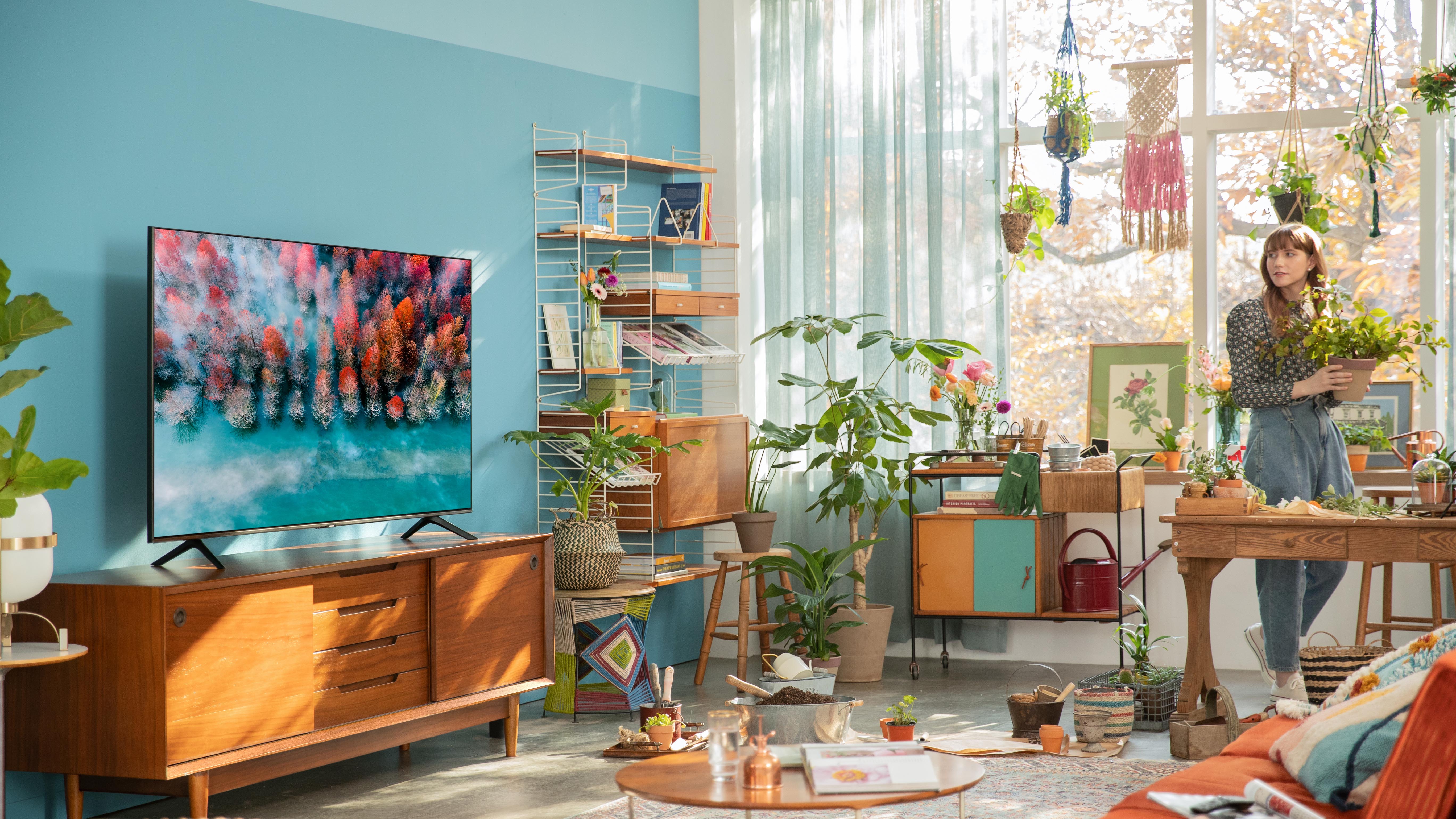
Samsung TU8000 LCD TV (available in 43, 50, 55, 58, 65, 75, 82-inch)
US model numbers: UN43TU8000FXZA, UN50TU8000FXZA, UN55TU8000FXZA, UN58TU8000FXZA, UN65TU8000FXZA, UN75TU8000FXZA, UN82TU8000FXZA,
UK model numbers: UE435TU8000KXXU, UE50TU8000KXXU, UE55TU8000KXXU, UE58TU8000KXXU, UE65TU8000KXXU, UE75TU8000KXXU, UE82TU8000KXXU
The TU8000 doesn't have the Dual LED tech of the set above, but it does offer 4K HDR with an expanded color gamut beyond most LCD sets. It's great value, with predictably good upscaling, even if narrow viewing angles and low brightness show the disparity between this and a QLED set. Starts at $349 / £429 for its smallest size.
Find out more in our Samsung TU8000 TV review.

Samsung TU7000/TU7100 LCD TV (available in 43, 50, 55, 58, 65, 75-inch)
US model numbers: UN43TU7000FXZA, UN50TU7000FXZA, UN55TU7000FXZA, UN58TU7000FXZA, UN65TU7000FXZA, UN75TU7000FXZA
Uk model numbers: UE43TU7000KXXU, UE50TU7000KXXU, UE55TU7000KXXU, UE65TU7000KXXU, UE75TU7000KXXU
If you're after a truly cheap Samsung 4K TV, the TU7000 could be it. Keep in mind that goes without most of the picture-enhancing features deployed on QLED sets, isn't overly bright, has just two HDMIs, and doesn't have Ambient Mode or a far-field mic either. Starts at just $279 / £379 (around AU$390) for its smallest size.
Read our full Samsung TU7100 TV review.
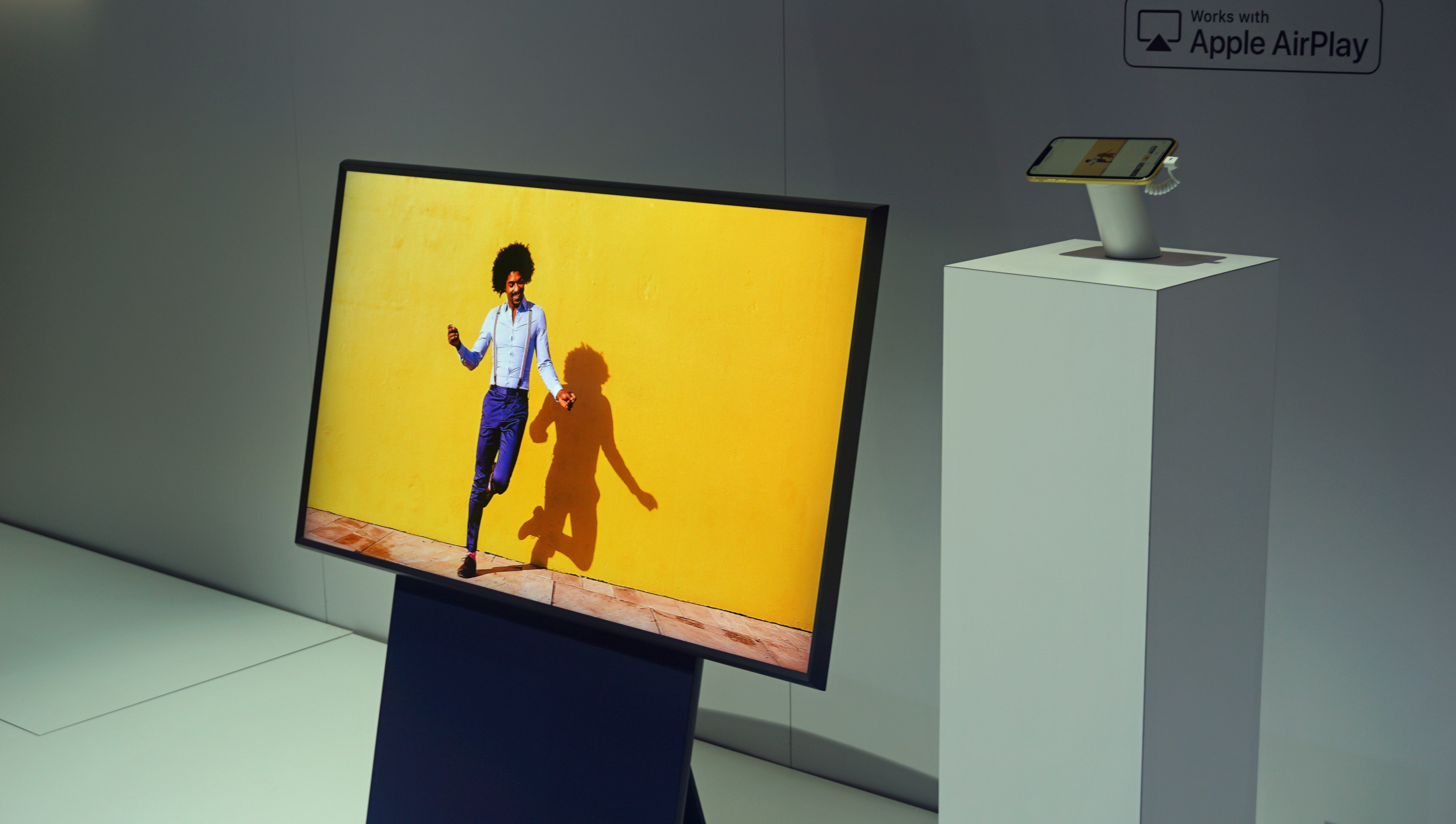
Samsung Sero TV (available in 47 inches)
US model numbers: QN43LS05TAFXZA ($1,999)
UK model numbers: QE43LS05TAUXXU (£1,599)
The Sero TV has a neat gimmick, being able to rotate 90 degrees to show mobile videos and photos in portrait mode. As an added bonus, anyone with the Samsung Note 10 can do so simply by connecting their handset and rotating it in their hand. Now that’s synergy!
It’s clearly aimed at Tik-Tok and Instagram users, though its niche target audience and approximate $1,600 / £1,230 / AU$2,300 price tag – we know for sure it's coming to UK and UK, with Australia being uncertain – will likely keep it out of the hands of most.
Check out our hands on Samsung Sero TV review for more on the new set.

Samsung The Frame TV (available in 32, 43, 50, 55, 65 75 inches): The Frame TV already exists, as a great-looking lifestyle model for those wanting to give their television a real touch of class – even if it’s at the expense of other areas. The Frame line got upgraded with a QLED panel in 2019, and 2020 has seen it get a new ultra-small 32-inch size and larger-than-ever 75-inch size too.
Read more: Should I buy Samsung The Frame TV?
- Sony TV: every new TV this year
- Panasonic TV: what's coming in 2021
- Hisense TV: new laser TVs, ULED, and Dual Cell screens
Sign up for breaking news, reviews, opinion, top tech deals, and more.

Henry is a freelance technology journalist, and former News & Features Editor for TechRadar, where he specialized in home entertainment gadgets such as TVs, projectors, soundbars, and smart speakers. Other bylines include Edge, T3, iMore, GamesRadar, NBC News, Healthline, and The Times.